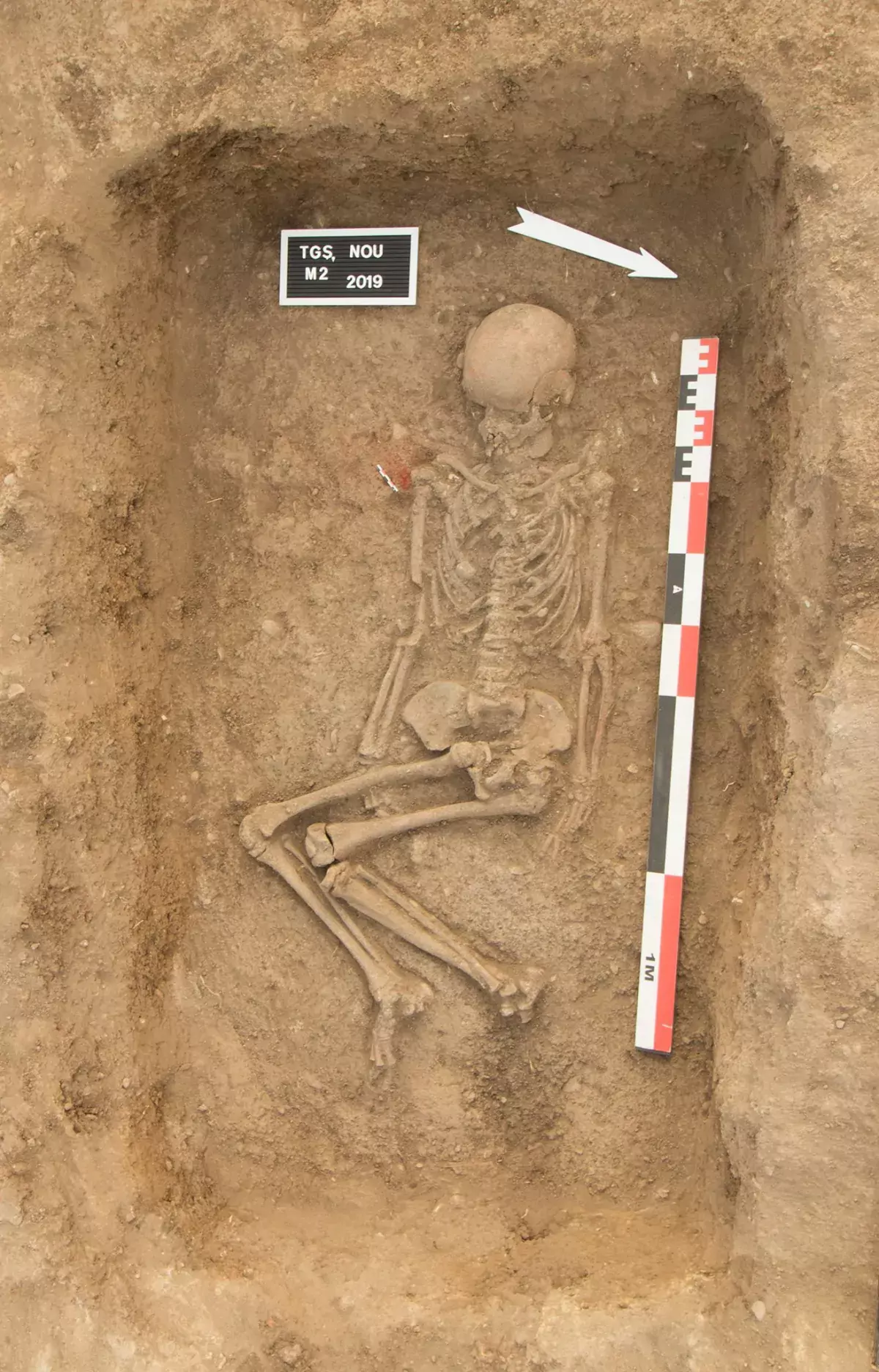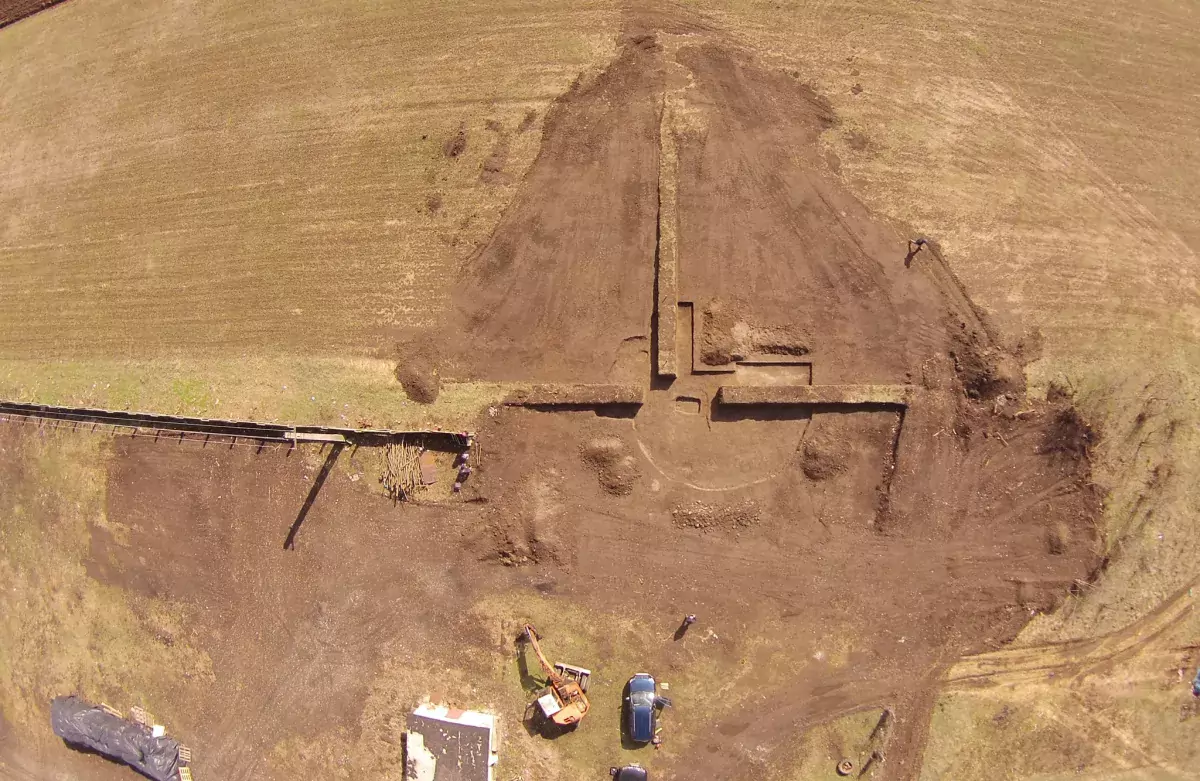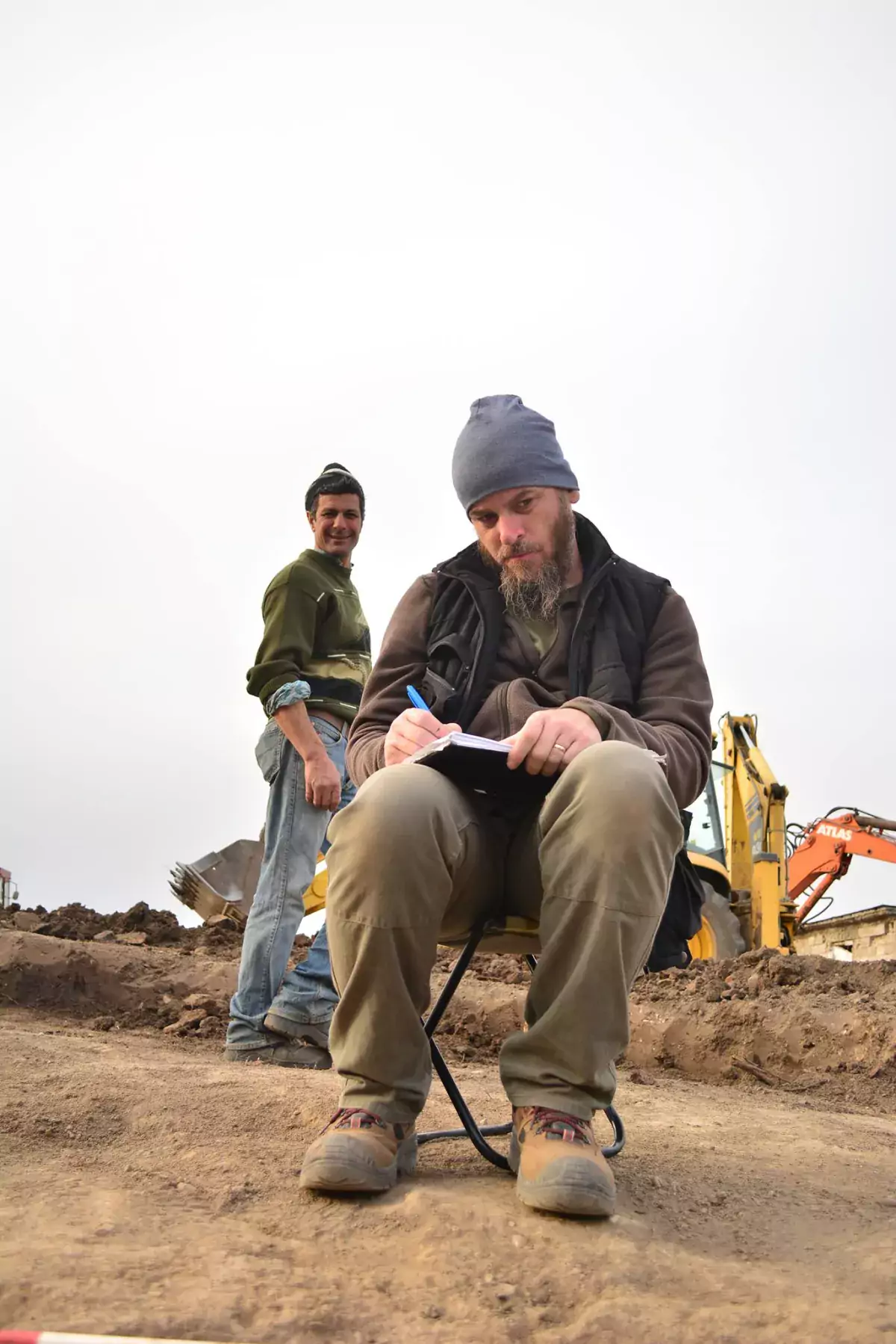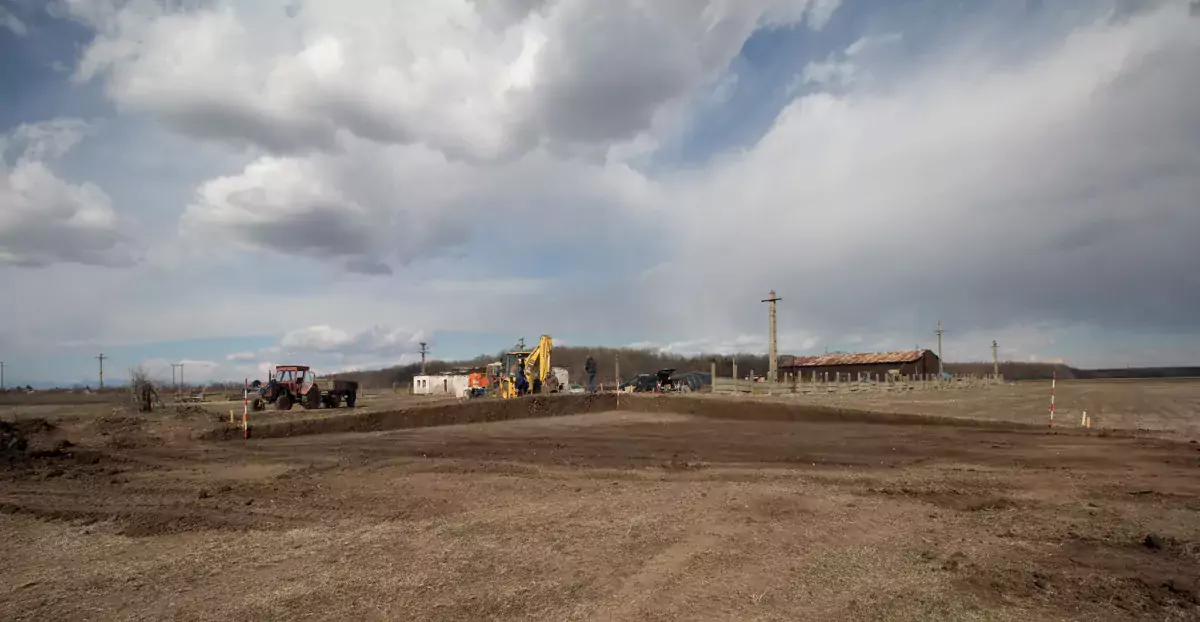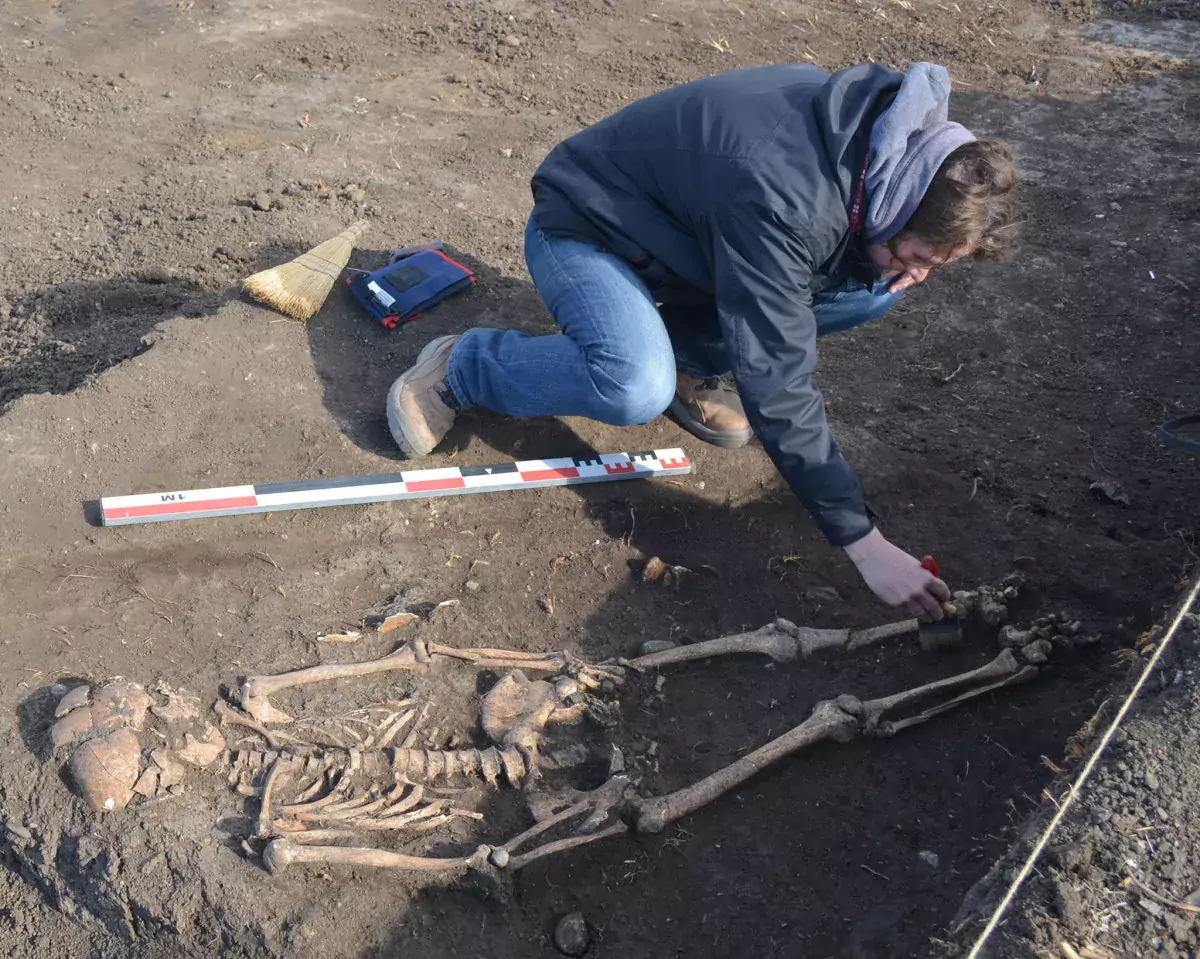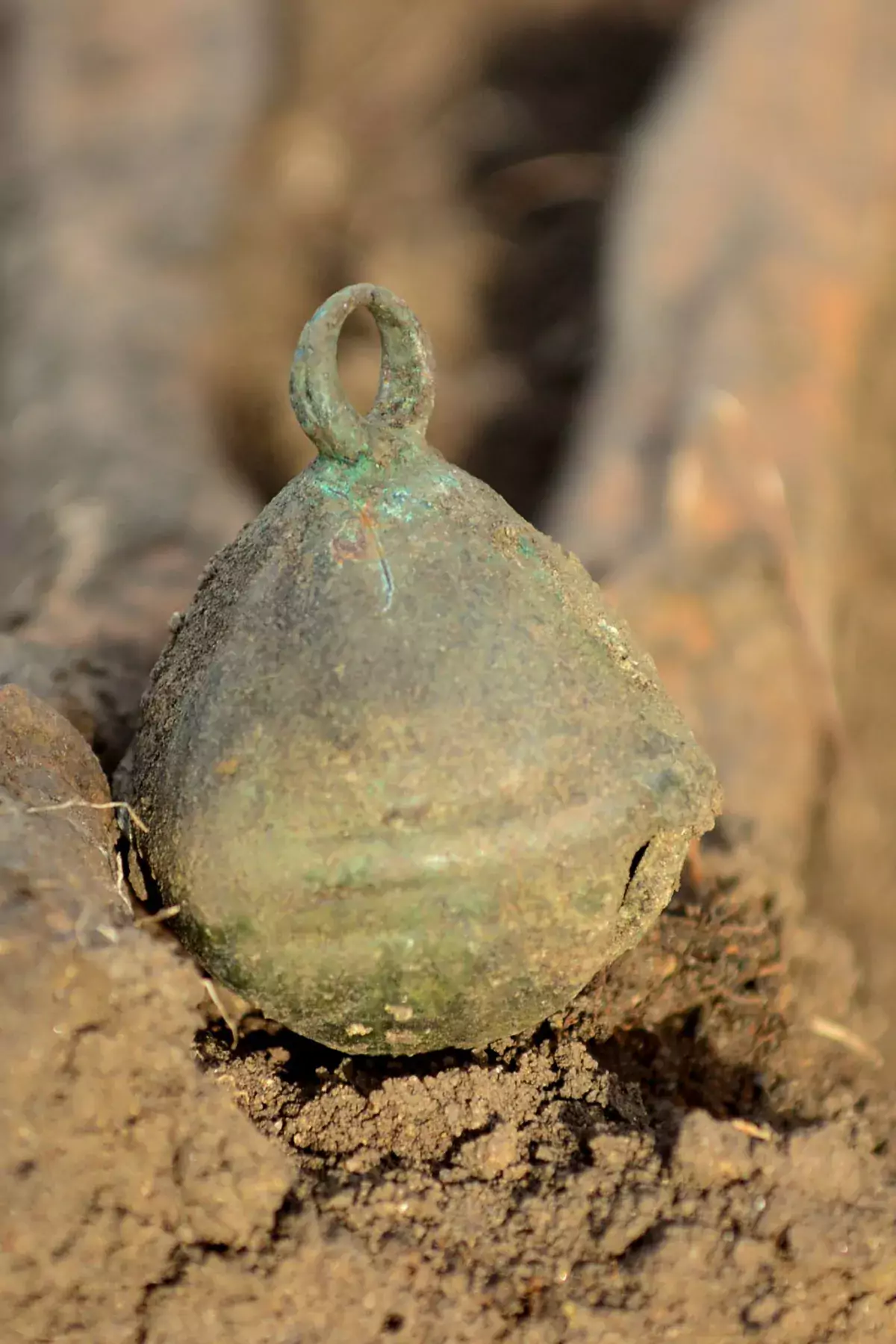The site had been partially destroyed by intensive agriculture as well as a fence built on top of it. Nonetheless, they were still able to investigate several archaeological features.
A burial (Grave 2) showing the typical Yamnaya ritual was uncovered in the centre of the mound. It contained the skeletal remains of a young individual lying supine with the knees initially raised and the arms stretched along the body. His head was oriented towards the west and nearby a small piece of ochre was found.
But this was not the first sign of human activity in that particular place. In an earlier phase, around the last third of the IV millennium BC, on the exactly same spot there was a settlement. In the layer beneath the mound the archaeologists discovered features with Cernavoda II type pottery. The mound was raised over the remains of this settlements during the first half of the III millenium BC. And the story doesn’t end here. Several millennia later, around the XI-XIII centuries AD the mound was once again used as a set for performing a burial, this time by Turkic nomad populations. The deceased (Grave 1) was buried along with body parts of a horse and a bell-shaped bronze pendant.
We thank our Romanian colleagues for sharing the information and pictures with us!
